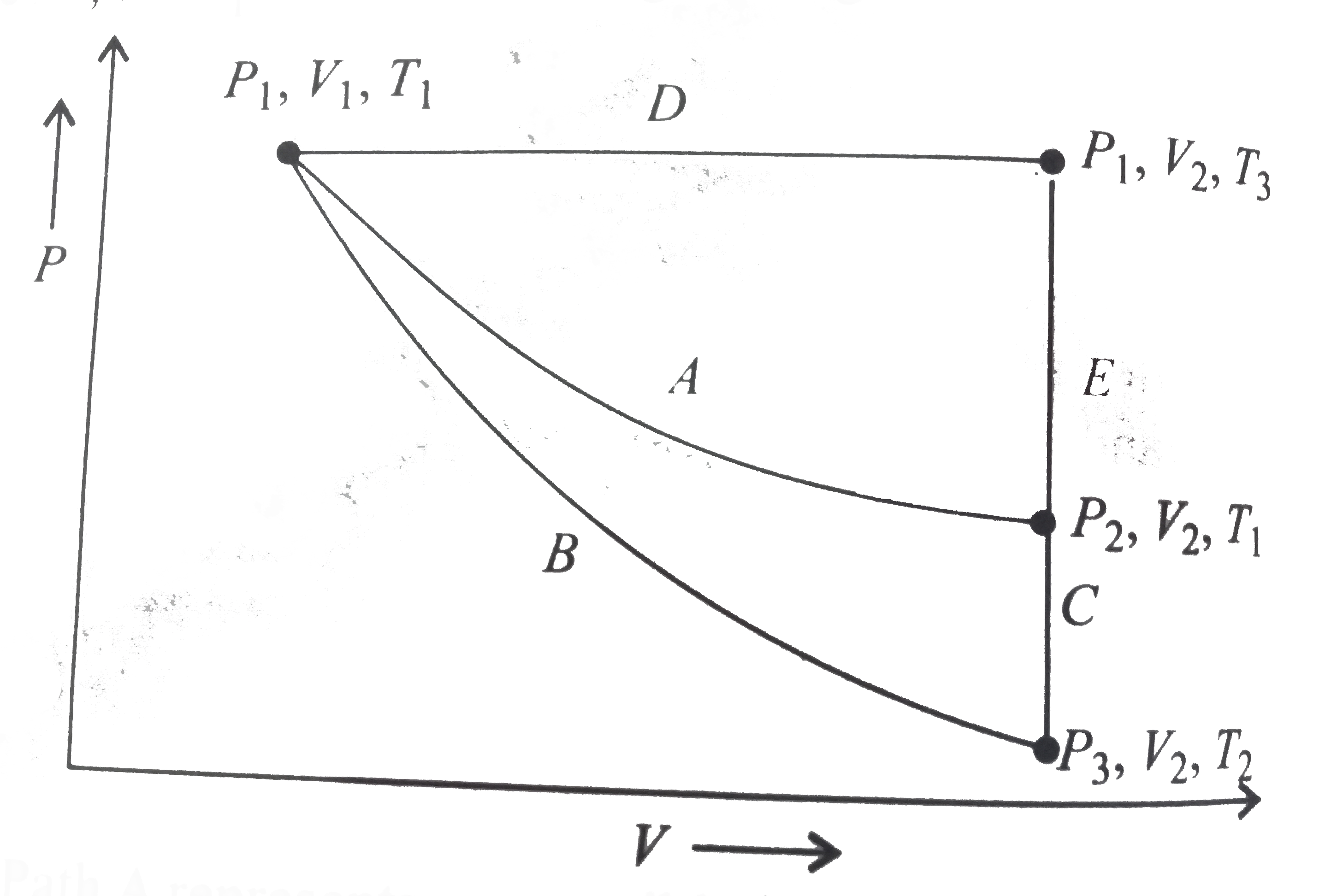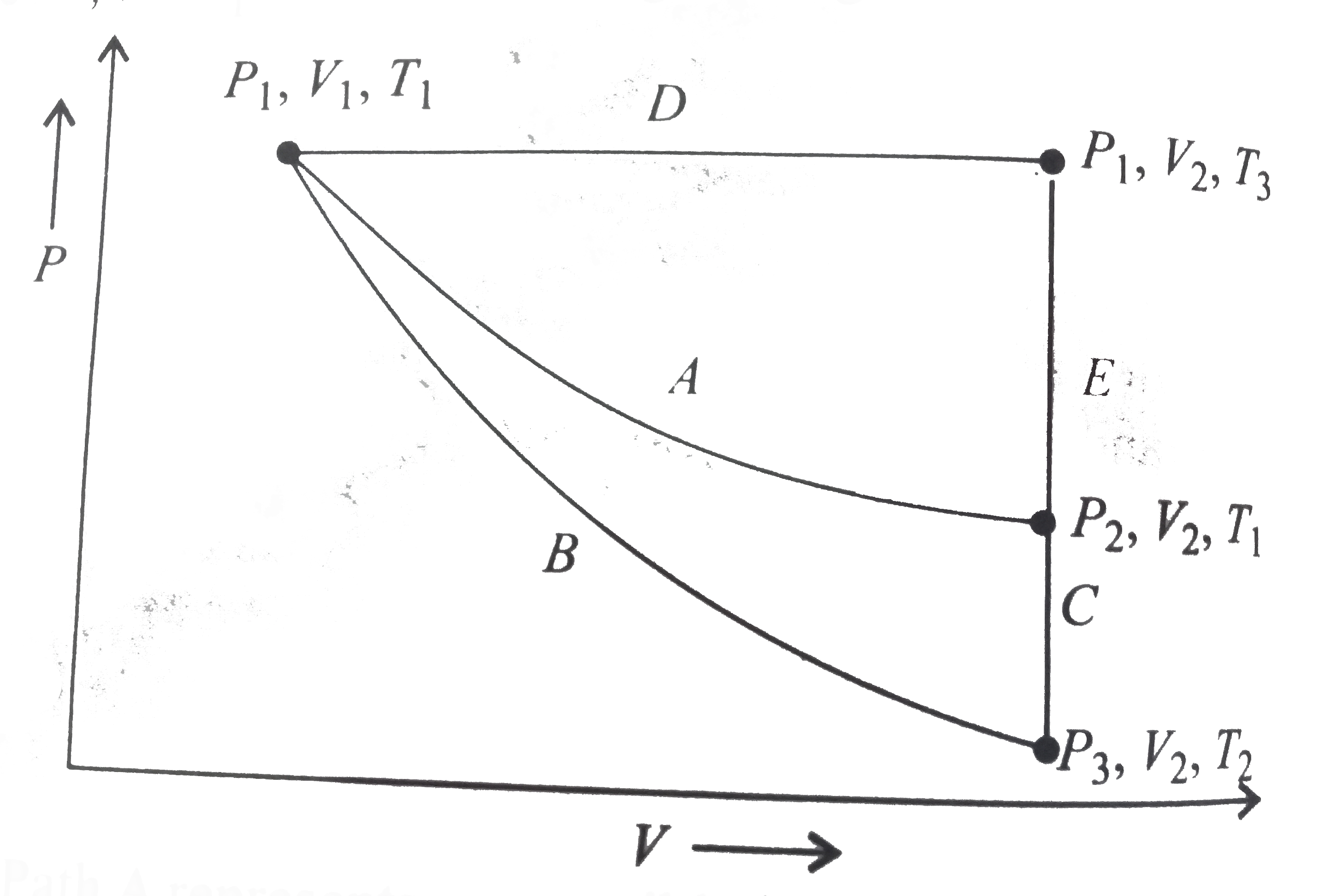Match Column - I with Column-II:
Column-I(Ideal Gas)Column-II(Related equation)(A)Reversible isothermal process(P)W = 2.303nRT log(P2/P1)(B)Reversible adiabatic process (Q)W=nCVm(T2−T1)(C)Irreversible adiabatic process(R)W = -2.303nRT log(V2/V1)(D)Irreversible isothermal process (S)W=−∫VfViPext.dV
The correct Answer is:(A) P,R,S (B) Q,S (C) Q,S (D) S
Topper's Solved these Questions
Similar Questions
Column-IColumn-II(A)Reversible isothermal expansion of an ideal gas(p)w=−2.303nRTlog(V2V1)(B)Reversible adiabatic compression of an ideal gas(q)PVγ=constant(C)Irreversible adiabatic expansion of an ideal gas(r)w=nR(γ−1)(T2−T1)(D)Irreversible isothermal compression of an ideal gas(s)ΔH=0
View SolutionColumn-IColumn-II(a)Reversible isothermal expansion of an ideal gas(p)w=2.330nRTlog(V2V1)(b)Reversible adiabatic compression of an ideal gas(q)PV'cosntant(c)Irrevesible adiabatic expansion of anideal gas(r)w=nR(γ−1)(T2−T1)(d)Irrevesiable isothermal compression of an ideal gas(s)ΔH=0
View Solution
Knowledge Check
The ratio of slopes of P−V plots for reversible adiabatic process and reversible isothermal process of an ideal gas is equal to :
AγB1−γCγ−1D1γFor an ideal gas, an illustratio of three different paths A(B+C) and (D+E) from an initial state P1,V1,T1 to a final state P2,V2,T1 is shown in the given figure.

Path Arepresents a reversible isothermal expansion form P1,V1 to P2,V2, Path (B+C) represents a reversible adiabatic expansion (B) from P1,V1,T1→P3,V2,T2 followed by reversible heating the gas at constant volume (C)from P3,V2,T2 to P2,V2,T1. Path (D+E) represents a reversible expansion at constant pressure P1(D) from P1,V1,T1 to P1,V2,T3 followed by a reversible cooling at constant volume V2(E) from P1,V2,T3→P2,V2,T1.
What is qrev, for path (B+C)?AnRInV2V1B−nRInV2V1CzeroDnRT1InV2V1For an ideal gas, an illustratio of three different paths A(B+C) and (D+E) from an initial state P1,V1,T1 to a final state P2,V2,T1 is shown in the given figure.

Path Arepresents a reversible isothermal expansion form P1,V1 to P2,V2, Path (B+C) represents a reversible adiabatic expansion (B) from P1,V1,T1→P3,V2,T2 followed by reversible heating the gas at constant volume (C)from P3,V2,T2 to P2,V2,T1. Path (D+E) represents a reversible expansion at constant pressure P1(D) from P1,V1,T1 to P1,V2,T3 followed by a reversible cooling at constant volume V2(E) from P1,V2,T3→P2,V2,T1.
What is qrev, for path (D+E)?AP(V2−V1)B∫T1T3CV(T)TdTCnRInV2V1D∫T3T1CV(T)dT
Match the column-1
Column IColumn II(A)ΔS=nCvlnT2T1(P)ΔSsys for an irreversible isochoric process(B)ΔS=−ΔUsysT(Q)|ΔS|surr for a reversible isochroric process(C)ΔS=nCvlnT2T1+nRlnV2V1(R)ΔSsurr for a reversible isochoric process(S)ΔSsys for a reversible process
View SolutionMatch the process given in Column - I with the entropy change in Column - II
Column I Column II(a)Reversible adiabatic ideal gas compression. (p)ΔSsurr=0(b)Reversible isothermal ideal gas expansion.(q)ΔSsystem=0 (c)Adiabatic free expansion (pext=0) of an ideal gas(r)ΔSsurr>0(d)Irreversible isothermal ideal gas compression. (s)ΔSsurr<0
View SolutionColumn IColumn II(A)Isothermal process(p)q=ΔU(B)Adiabatic process(p)w=−pPΔV(C)Isobaric process(r)w=ΔU(D)Isochoric process(s)w=nRTln(V2/V1)
(a) A−s,B−q,C−r,D−p (b) A−s,B−r,C−q,D−p (c )A−p,B−r,C−q,D−s (d) A−r,B−p,C−s,D−q
View SolutionFor one mole of a monoatomic gas :-
Column-IColumn-II(A)Isothermal bulk modulus, (p)−RTV2(B)Adiabatic bulk modulus (q)−5P3V(C)Slope of P-V graph in isothermal process (r)T/V(D)Slope of P-V graph in adiabatic process(s)4T/3V(t)None
View SolutionFor an ideal gas, an illustratio of three different paths A(B+C) and (D+E) from an initial state P1,V1,T1 to a final state P2,V2,T1 is shown in the given figure.

Path Arepresents a reversible isothermal expansion form P1,V1 to P2,V2, Path (B+C) represents a reversible adiabatic expansion (B) from P1,V1,T1→P3,V2,T2 followed by reversible heating the gas at constant volume (C)from P3,V2,T2 to P2,V2,T1. Path (D+E) represents a reversible expansion at constant pressure P1(D) from P1,V1,T1 to P1,V2,T3 followed by a reversible cooling at constant volume V2(E) from P1,V2,T3→P2,V2,T1.
What is qrev, for path (D+E)?
View Solution
